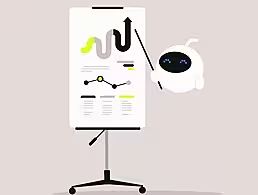Any change to work processes can be daunting. Here are some top tips from experts on managing the upheaval.
An automated workforce, when correctly established, should make the working lives of everyone involved easier. It is not a vehicle to replace an employee, but rather, a tool to expedite laborious processes and give time back to the company and its employees.
Because automated tools and the companies that wield them have to be in sync, making the decision to automate is not always an easy transition. We spoke to two experts, Ameya Rane, an artificial intelligence and data senior consultant at Deloitte Ireland and Darragh Jones, an automation engineer at Workhuman, about how this can be successfully navigated.
Clever implementation
For Rane, it is important that those planning to implement company-wide automations should be mindful of people’s genuine concerns. He explains a lack of understanding of the technology, the additional training requirements, the potential for role loss, insufficient investment and the unknowns around reliability and effectiveness, can be significant hurdles to overcome.
For example, in 2019, Deloitte aimed to transform processes and upskill staff to reduce the manual effort required by the company. It was an ambitious project that involved designing a tool in VBA (visual basic for applications).
“We faced challenges such as maintenance due to lack of technical expertise, validating outputs for regulatory reports and concerns over job loss for staff involved in data entry,” Rane explains.
This fear of the potential for disruption and unknown consequences resonates with Jones, who believes the biggest challenge in the implementation of workplace automation is the resistance to change.
“Teams often prefer adhering to familiar tools and processes that already work, fearing that new methods may disrupt their workflow or introduce unforeseen issues. If it’s not broken, then why fix it right?” he says.
Automation is no easy feat, as Jones explains the technical skill and work it takes to integrate new practices and legacy systems demands significant time and resources, so “navigating this involves addressing both the human and technical aspects”.
Employee communication and engagement is crucial to addressing the challenges of automation implementation. Jones is of the opinion that employers should detail the long-term benefits of new practices, such as improved efficiency. It can also be helpful to demonstrate quick wins through pilot projects, building confidence and illustrating the value of change.
This is echoed by Rane who cited clear communication about the need for automation and the establishment of feedback channels as having played an important part in addressing issues that arose in the past. He also discovered that gradually implementing change allowed people the necessary time to adjust naturally, with minimal disruption.
“By addressing concerns collaboratively and integrating feedback, it’s possible to ensure a smoother transition and successful implementation of new test automation practices,” Jones says.
Who can do this?
Automation professionals are highly skilled and in high demand. What does someone starting out need to know to succeed?
For Jones, a commitment to continuous learning is crucial, particularly for someone aiming to transition from manual testing to QA automation. He notes there would have to be considerable personal investment of learning put in, especially with popular programming languages such as Python, Java and JavaScript.
“Online courses, certifications and hands-on projects are essential for building a strong foundation. Be prepared to spend long hours honing your skills, as this dedication is crucial for mastering the technical aspects of automation,” he says.
Rane seconds this, adding that a knowledge of automation tools such as Selenium and UiPath can be useful for automating repetitive tasks in system administration.
Automation engineers should “stay updated on industry trends through certifications, courses and professional networks and engage in hands-on projects to apply your skills in real-world scenarios. Joining forums and attending industry events can also provide valuable insights and connections,” he says.
Jones notes it isn’t just about technical prowess. Automation engineers need to develop their problem-solving skills so they can tackle complex problems and optimise testing processes.
“Cultivate a mindset focused on identifying inefficiencies and developing innovative solutions. Think about how automation can help the team. Think about performance and scalability as crucial cornerstones of automation.”
Find out how emerging tech trends are transforming tomorrow with our new podcast, Future Human: The Series. Listen now on Spotify, on Apple or wherever you get your podcasts.




